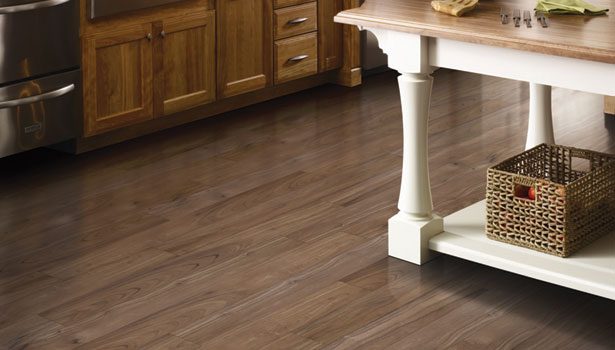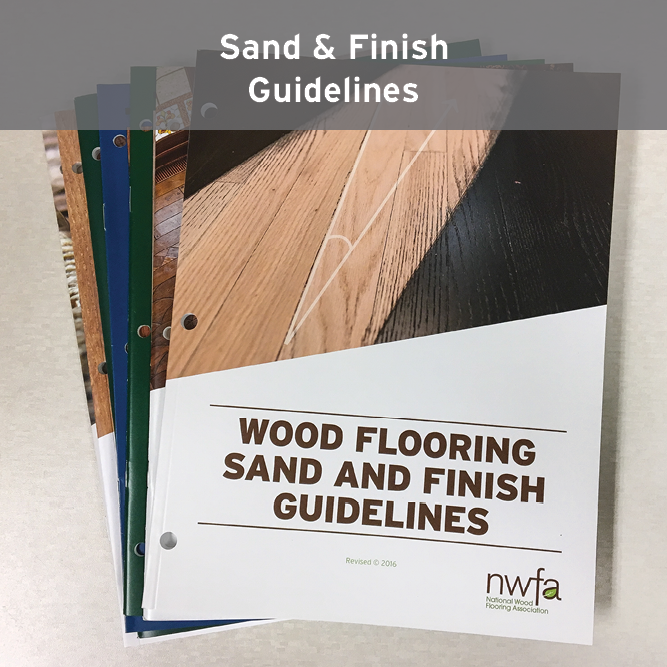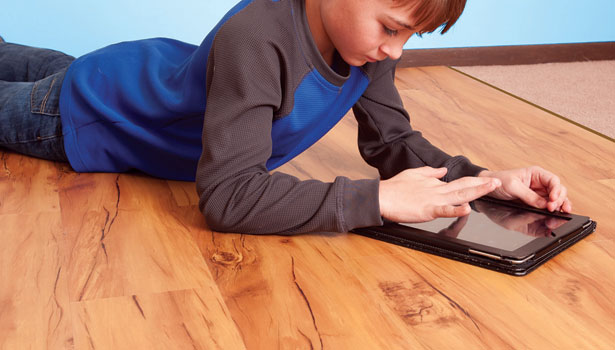Methods and Requirements for Installing LVT and LVP








Luxury vinyl flooring (LVF), including plank (LVP) and tile (LVT), has seen a resurgence in recent years, and can be found installed in both residential and commercial settings. The product itself can be laid many different ways, including floating, full-spread and perimeter-adhered. We asked a range of industry experts to share their views on the best way to install this popular and lucrative product.
Ken Peth, senior project manager of Division 9 Contract Flooring in Woodinville, Wash., said contractors need to understand a few things about working with luxury vinyl flooring. “You have to acclimate the LVT for 48 to 72 hours, and it’s very temperature-sensitive. If you happen to install it when it’s 90 degrees out and people move in and set the AC at 60, it will shrink. If you install it on a 50-degree day and people move in and set the thermostat at 75, it will expand.”
Craig Morris, Ardex technical services manager, said a common misconception is corners can be cut in subfloor preparation when installing floating LVT. “Whether it is a direct-bond or floating floor, subfloor defects can potentially telegraph into the surface of the LVT. Floor flatness and levelness must also be considered as these will not be ‘covered up’ by the LVT and in fact may become accentuated by their installation.”
He added when the substrate is uneven, it can lead in extreme cases to disbonding in direct-bonded LVT and failures in the click-and-lock seam for floating floors. Floating floors also shouldn’t be used over subfloors with moisture problems. “With sufficient moisture drive, vapor can condense below the vinyl and contribute to the growth of mold and mildew.”
According to Larry Scott, DriTac vice president of field technical services, one area where floating floors have an advantage is in covering existing flooring. “In the past, this primarily kept installers from having to deal with old floor covering and adhesive residues such as asbestos during the removal process.”
He said flooring underlayment is not required for LVT, but may be preferred in cases where sound control is important. “If additional sound control is preferred, a foam underlayment can assist in providing sound abatement and reducing the impact noise from above.”
Christopher Capobianco, Ecore Commercial Flooring product expert, said the first thing to understand about LVT is it’s not a true product category. “LVT is a just a marketing term, but not all products sold as LVT are the same. Some are VCT with a decorative print, others are solid vinyl, and then there is vinyl laminated to fiberboard. Installation procedures may not be the same, so it’s important to follow manufacturer’s guidelines for adhesive and installation procedures.”
He stated that floating vinyl flooring “seems to be doing well in residential settings, but there is not a long track record for it in the commercial space, where we know glue-down works well. It’s always a good idea to consult with the manufacturer regarding the specific site conditions before proceeding with a floating installation in large or high-traffic commercial areas.”
As for the use of adhesives, Capobianco added, “Standard vinyl tile is full-spread installation, and others are made to be floating or perimeter-adhered. In general, high foot traffic or rolling traffic areas, or floors that are frequently wet or washed, should be full-spread. In some cases, it’s necessary to use a heavy-duty two-part reactive adhesive, like epoxy or polyurethane, for added durability against point loads, rolling loads and topical moisture.”
Mark Lamanno, Franklin International technical market manager, stated the full-spread method should also be used for pattern layouts. However, he added to always defer to the manufacturer’s recommendations.
The same mindset should be used when selecting an underlayment, he said. “There are several manufacturers that offer pads for LVT. Certain ones allow for less subfloor prep and can be installed over some subfloors that otherwise have an unacceptable material for adhesive use. Again, be sure and check with those manufacturers that allow for this approach or make this recommendation.”
Larry Smith and Martin Lovato of Future Foam said their company’s dBcover LVT underlayment includes an attached moisture barrier and can be used for both residential and commercial use. “LVT is doing great in North America because it transitioned from what was originally a much more commercial application into the residential segment,” Lovato noted.
According to Tony Dominguez, Halex technical services manager, acclimation requirements for luxury vinyl flooring and adhesives will differ from manufacturer to manufacturer, though a good rule of thumb is to give the products 48 to 72 hours. “Some manufacturers will require the packaging be removed and the material be staged on site without packaging. Others require just removing shrink wrap from the pallet and stacking them no more than three high.”
As far as the adhesives he sees used for LVT, most are either wet-set or pressure-sensitive. Regarding the substrate, he added, “Typical site conditions are going to be wood or concrete. You are looking for a substrate that is smooth and flat, but not level. Any undulations need to be filled or ground down.”
H.B. Fuller Construction Products’ Tom Plaskota, technical support manager, agreed that it is important to take care of any subfloor issues before installing LVT. “Luxury vinyl can be installed over many different subfloors – but regardless of type, these subfloors must be smooth. Imperfections in the subfloors may be visible through the tile and cause premature wear. Secure any loose edges or areas of the subfloor, and sand all of its raised edges. You should also patch any cracks or depressions.”
Jeff Johnson, MAPEI’s floor covering installation systems business manager, said when installing LVT in multifamily remodels “often the subfloor is an existing poured gypsum underlayment over a wood subfloor. These gypsum subfloors require special preparation prior to the application of LVT. At the very least, the surface should be primed with a primer that is compatible with the LVT adhesive.”
On adhering the floor, Johnson noted LVT is best installed with a full-spread adhesive. Perimeter bonding “is really limited to sheet vinyl (solid, glass reinforced) where all you are doing is fixing the flooring along the edges of the installation. There are options, however, on how adhesives can be installed using the full-spread method, including trowel, spray-on or roller-applied. Spray-on and roller-applied typically require a much flatter surface in order to properly function.”
He added that due to the design nature of LVT, it can also be grouted. However, these grouts are not the same cement-based materials used when working with tile and stone. “The compounds are typically acrylic based with a fine sand aggregate, but result in a grout line that is somewhat flexible.”
Metroflor’s technical sales manager, Kevin Parker, said the number of transitions needed in an installation can play a role in deciding whether to go with a glue-down or floating application. “Most floating floors have maximum lengths, or areas of square footage that can be installed before a transition is needed. In most cases, a T-molding that may be required in an interior doorway will not be considered a detriment. However, installing a floating LVT in a hallway, which may require multiple transition strips, could be seen as both an aesthetic and a practical deterrent.”
A glue-down installation should be used whenever static, heavy objects will be resting on the floor, even for products labeled as floating. “Heavy objects can pinch floating floors and prevent necessary expansion and contraction. We have a new product called Metroflor iNTACT that uses perimeter tape while allowing the remaining floor to be loose lay. Although we still do not recommend heavy rolling loads for iNTACT, heavy objects sitting on the flooring have no issues.”
Alan Smith, director of resilient flooring for Mohawk Hard Surfaces, shared the following tips about LVT installation: “The HVAC system should be in operation for at least 10 days prior to flooring installation and at least three days prior to moisture testing. Proper acclimation of the room, substrate, flooring material and installation accessories is critical to a successful installation and the longevity of the installation.”
He added, “The end use dictates the preferred installation method in perimeter versus full spread. Full spread should be used in heavy commercial areas with concentrated traffic lanes and heavy loads. Perimeter spread is suitable for general commercial as well as residential.”
According to Timothy Mergard, MP Global Products vinyl floor manager, the subfloor should not only be flat but smooth, firm and free of lateral movement. “You want a flat subfloor with no seams – a smooth concrete subfloor or a solid wood subfloor with all the joints filled and all nails or preferably screws securely fastened, and all depressions filled.”
In addition to glue-down and click floating installations, he added “there are luxury vinyl products on the market referred to as ‘loose lay.’ These products are typically thicker and have a specific anti-skid mechanism manufactured to the bottom. These products also may require first securing the perimeter with glue around the installation area to further provide support for the flooring.”
Sonny Callaham, Royal Adhesives & Sealants technical product manager, said a common problem he sees is the incorrect adhesive being used. “Not all vinyl tile or plank can be installed with a pressure-sensitive adhesive. Sometimes it requires the use of a wet-set adhesive to minimize the movement of the material in extreme climate conditions. The adhesive requirements of the flooring manufacturer will always supersede those of the adhesive manufacturer in that situation.”
He added, “How the flooring will be used, maintained and the amount of traffic the flooring will experience during its life will all play a key part in deciding which installation method to use. This decision should be made during the sale of the material when the contractor or sales person has direct contact with the architect or owner; it should not be made when the flooring is being installed as the installer may not have all of the information needed to make the proper choice.”
Regarding cushion or underlayment beneath LVT, he stated, “All cushion and underlayment are not created equal. Check with the adhesive manufacturer and the flooring manufacturer to see if they have performed testing with the product. In most cases you will want to install the underlayment using the same adhesive as the one to install the flooring.”
Shaw’s Len Daubler, hard surfaces technical support manager, stated the subfloor should be free of all contaminants and a chemical or solvent should never be used to remove these contaminants, as this may damage the resilient.
Any room that receives lots of direct sunlight should receive a glue-down installation, he added. “Heat from direct sunlight can make the floor grow or expand, resulting in buckling. If in doubt, glue the floor down.”
Daubler noted that loose lay products can be installed in a variety of ways. “They may be loose laid and cut to fit the walls, they may be able to be perimeter glued to minimize movement, or they may be completely full-spread.”
John Geier, W.F. Taylor technical services manager, said the subfloor needs to meet the following requirements for a successful installation: “The subfloor needs to flat, 3/16” within a 10’ radius, 1/8” over a 6’ radius. The subfloor moisture can read up to 80-85% RH and five to eight lbs. on a calcium chloride test. Installation can occur below, on and above grade.”
Full spread is always the best option, even for perimeter glue products, he said. “When a full spread installation is followed the end user will be less likely to encounter any product adhesion and movement-related issues.”
He noted when an underlayment is chosen for LVT, it should always be high density. “The LVT product should be direct-glued to the underlayment, and then direct-glued to the subfloor.”
Looking for a reprint of this article?
From high-res PDFs to custom plaques, order your copy today!












